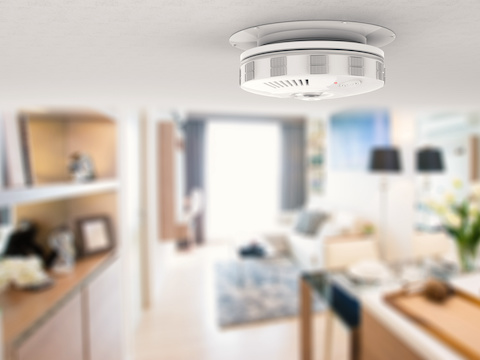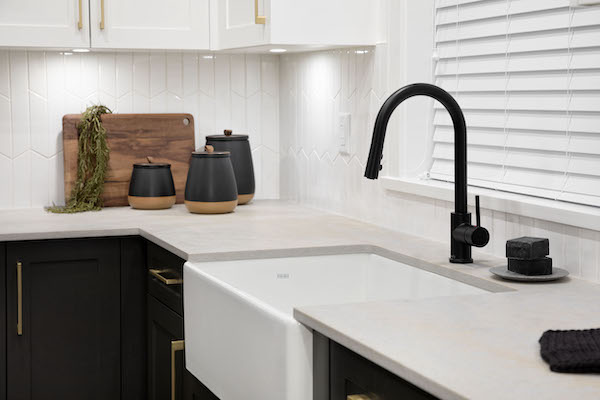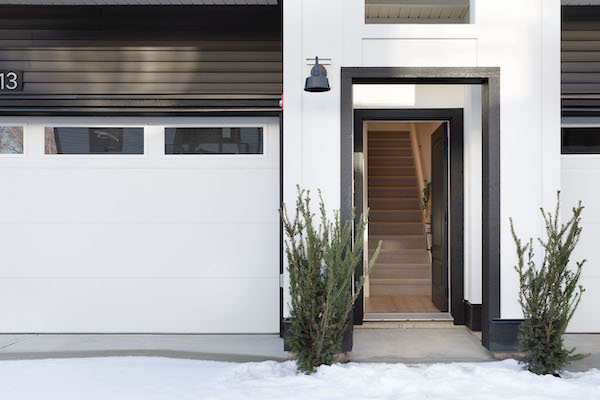Winter is the darkest and coldest of the seasons, and with the chill and snowfall you want to make sure your cozy retreat is uninterrupted by potential damage the cold weather can cause.
Maintaining and caring for your home can be intimidating, especially if you are new to or exploring home ownership. Owning a new home under warranty is a perk that takes away some of that pressure, but it is still important to understand that neglecting the maintenance of your home can void or impact the level of coverage.
Whether your home is warranted or not, learning to inspect and protect your investment will help keep your home in optimal condition, while potentially sparing you from costly repairs.
Read our detailed breakdown of important winter home maintenance tasks. Then, prioritize a to-do list, print off the downloadable checklist for reference, and then decide what your schedule allows you to tackle.
If you’re on a tight schedule, you can chip away at maintenance when you have a chance. Or, you may choose to enlist the help of a professional to save time and ensure everything gets done properly. Either way, it’s important to follow a regular home maintenance routine.
Download our Winter Home Maintenance checklist as a PDF.
Use our Winter Home Maintenance Checklist to ensure your home is in top-notch shape from the inside, out.
Interior Winter Home Maintenance
Here are the important home maintenance tasks for the interior of your home:
Replace Cracked Caulking
Check around bathtubs, showers and sink fixtures to prevent water penetration behind tiles and countertops. Although it may make a tub, sink or shower impervious to water for an extended amount of time, caulking doesn’t last forever. Over time, caulking can wear, crack, discolour and shrink, which may eventually lead to water damage. Assess the caulking around the fixtures and re-caulk if necessary.
Inspect for Signs of Water Ingress
Check the basement and attic for signs of water ingress by looking for mold and mildew stains on carpets and baseboards, wet patches on exposed concrete, and musty odours.
Check Hot Water Tank
After consulting your hot water tank’s manual, carefully test the temperature and pressure relief valve. Review the timetable and instructions for draining several gallons of water from the bottom of the water heater. This can reduce build-up of mineral deposits, prolong the tank’s life and save energy dollars.
Check for Drafts
Increase the comfort of your home by draft-proofing. Heat can often be lost through windows and doors that have been improperly fitted or have cracked panes and loose weather-stripping. Draft-proofing your home will not only improve your comfort and keep your home warmer in the winter, it will also save you energy and money, reduce noise and stop pests from moving in.
Check the weather-stripping around doors and windows for air infiltration, and ensure the seal is adequate. Open the blinds and allow air to circulate; by ventilating the windows, you can reduce moisture that might result in condensation or frost.
Replace Furnace Filters
Check and replace furnace air filters regularly during the heating season. Furnace filters should be changed every 3 months to ensure your indoor air quality is clean. A clogged filter can slow air flow and cause cold spots in your home. Although it takes only a few minutes to change, this is one of the most frequently overlooked details of normal furnace maintenance.
Vacuum Bathroom Fans and Smoke Detectors

Bathroom fans help rid air of odour and moisture, and can benefit from a good cleaning at least a couple times a year. Disconnect the power to your fan by turning off the breaker. Remove the cover of your fan by squeezing the metal prongs/wires. Vacuum the dust out with a bristle attachment and soak the cover in a gentle solution of warm water and dish soap. Give the fan a good scrub with a cloth or brush and allow it to air dry completely before re-installing.
While you’re at it – clean the smoke detectors as well, using a vacuum attachment to remove dust and fluff. If possible, vacuum inside the unit and press the test button when you are done to ensure the alarm goes off.
Monitor Home for Excessive Moisture Levels
Humidity levels will vary daily depending on activities inside the home and the temperatures outside the house. In the winter months, low levels of humidity can cause breathing difficulty, a sore throat and even dry skin.
Take steps to help keep the desired humidity level by using a dehumidifier, growing plants that absorb humidity and ensuring your furnace filters are changed every few months or as needed to allow the system to run at its optimal capacity.
Many SMART thermostats display the humidity levels in your home to help you monitor the levels. Alternatively, you can pick up a hygrometer that helps measure moisture levels, allowing you to make the needed adjustments to reach the desired level in your home.
Check Faucets for Signs of Dripping
There are many causes for a leaky faucet: damaged cartridges, malfunctioning rings, deteriorated valves and more. Save yourself some money by fixing a leaky faucet and avoid wasting water.
Clean Drains in Dishwashers, Sinks, Tubs and Showers

Avoid discoloured, smelly drains by cleaning and de-clogging at least a few times a month. For bathroom and kitchen sink drains, begin by removing scum or hair buildup around the drain. Pour a half cup of baking soda down the drain and allow to sit for 30 minutes, then follow with a couple of litres of boiling water.
Exterior Winter Home Maintenance
Here are the important home maintenance tasks for the exterior of your home:
Keep Gutters and Roof Clear of Snow
Allowing snow to build up in these areas can cause ice damming to occur, which can result in flooding, roof and gutter damage, and ultimately costly repairs.
Keep Accumulations of Snow Away from Foundation
When snow begins to melt, the excessive water can overload the perimeter drainage causing water to penetrate through cracks in the foundation and into the home. Accumulations of snow can also cause water damage to wood siding and allow moisture to soak up underneath the house and into the exterior wall assembly.
Check Electrical Cords, Plugs and Outlets

Check electrical cords, plugs and outlets for all indoor and outdoor lights to ensure fire safety. Examine your home’s exterior outlets and make sure that they are sealed against the elements. Make sure anything plugged into an exterior outlet for a prolonged amount of time isn’t propping the weather cover open, exposing the connection to rain or moisture.
Check Roof for Ice Damns or Icicles
Dams can tear off gutters, loosen shingles, and cause water to back up. Invest in a snow rake, commonly used to remove snow off roofs, a snow rake is a long aluminum hoe with a wide head intended to reduce formation of ice and lighten the load off roofs.
New Home Warranty
According to the Homeowner Protection Act and regulations, “new homes built in B.C. by licensed residential builders must be covered by mandatory, third-party home warranty insurance.”
If you own a home with home warranty insurance, you could limit your coverage due to negligent or improper maintenance of your home.
In British Columbia, home warranty insurance on new homes includes a minimum of 2 years on labour and materials (some limits apply), 5 years on the building envelope, including water penetration, and 10 years on structure.
Homeowners will find the BC Housing Residential Construction Performance Guide an extremely valuable resource when trying to determine whether or not a concern they have with their new home might be covered by their warranty insurance.
Understanding this distinction will help homeowners gain a more realistic expectation about the performance of their new home and help them self-evaluate possible defects.
By establishing good maintenance practices, protecting your investment will become much more manageable. We hope that this Fall Home Maintenance Checklist helps you familiarize yourself with your home while creating a consistent maintenance routine.
Note: If any of our tips go beyond your skill level or lead to more involved repairs, we strongly advise you to hire a professional to help.
